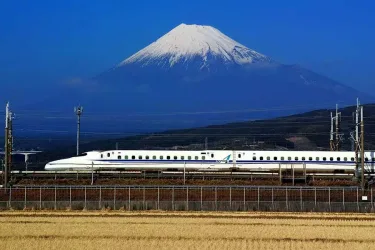
Mount Fuji
Mt Fuji is one of the most famous symbols of Japan, and it is one of the most beautiful vistas that you will get on your Japan trip. While climbing Fujisan is only possible in the summer, enjoying views of the majestic mountain is possible year-round (weather permitting) and actually best done in winter when the air is clear. This travel guide will help you on your way if you want to enjoy Mt Fuji!
During the spring season, there is a gorgeous flower festival nearby, and when the cherry blossoms bloom you can take world-class photos in the area. Mt Fuji is not far away from Tokyo and can be visited on a day trip to Kawaguchiko, the travel time from Shinjuku is only around 2 hours one-way.
Check out our Mt Fuji e-bike tour if you want to discover the area comfortably by bike!
-

Mount Fuji: Japan’s Sacred Icon and Natural Wonder
Discover Mount Fuji, Japan’s iconic sacred mountain and UNESCO World Heritage site. Complete guide to climbing, best viewing locations at Fuji Five Lakes, cultural significance, and planning your ultimate富士山 experience.
-
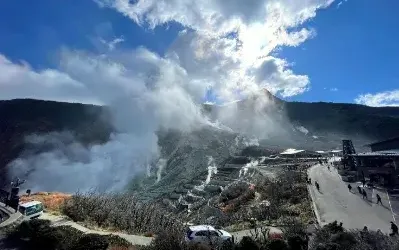
Hakone: The Timeless Hot Spring Paradise with Mount Fuji Views
Experience Hakone, Japan’s legendary hot spring resort in the shadows of Mount Fuji. Discover therapeutic onsens, scenic transportation, traditional ryokans, and breathtaking natural beauty in this complete guide to planning your Hakone getaway.
-
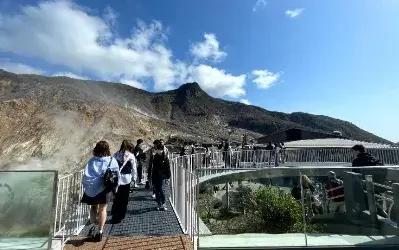
Owakudani: Hakone’s Volcanic Wonderland
Discover Owakudani, Hakone’s dramatic volcanic valley where eggs turn black in natural hot springs. Experience geothermal wonders, learn about volcanic activity, and try the legendary kuro-tamago.
-

Lake Ashi Hakone: Scenic Caldera Lake with Mount Fuji Views
Discover Lake Ashi (Ashinoko), Hakone’s stunning caldera lake featuring pirate ship cruises and breathtaking Mount Fuji views. Complete guide to cruises, photography, and lakeside attractions.
-
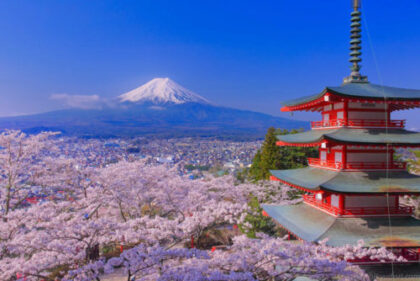
Arakurayama Sengen Park | The most famous and beautiful view of Mt.Fuji
Go to Arakurayama Sengen Park if you want to take that famous photograph that showcases three iconic symbols of Japan at the same time in spring; a five-storied pagoda, cherry blossoms, and Mt Fuji.
-

Mt Fuji | Symbol Of Japan That Shows A Different Face Every Time You See It
See beautiful pictures of the many different faces of Mt Fuji from various vantage points!
-

A Place where You can Look into the world of Evangelion in Hakone
If you love Japanese anime Neon Genesis EVANGELION, an ‘anime pilgrimage’ to Hakone is a great activity to do from Tokyo. There are many places that appear in the series in Hakone, find out where to go in real life!
-
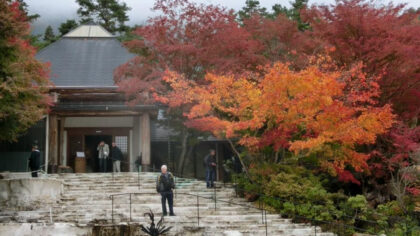
Itchiku Kubota Art Museum | A special world of exquisite dyed works
In 1994, textile dyeing artist Itchiku Kubota built a museum with his name in a perfect place, with a majestic view of Mount Fuji and serene Lake Kawaguchi.
-

Mt Fuji Shibazakura Festival 2024 | Beautiful view of Mt. Fuji and all the lawn cherry blossoms
The Fuji Shibazakura Festival is an exceptional event near Mt. Shibazakura flowers bloom in different colors and in different shapes, creating a beautiful multicolored field. In 2023, it is held in April and May.
-
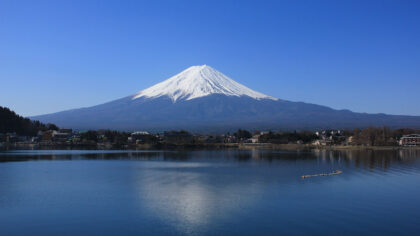
Lake Kawaguchiko | Beautiful scenery from season to season
Kawaguchiko is best-known for its amazing view of Mt Fuji. Located at the foot of the mountain, there are many vantage points from which to see the symbol of Japan.
-
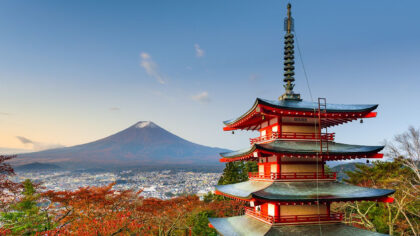
The History of Japan’s Pride of Mt.Fuji
The region around Mt Fuji has long been the inspiration for the works of many of Japan’s most celebrated writers, poets, and artists. How did this beautiful mountain with its nearly perfect symmetrical cone originate?
-

Climbing Mt. Fuji was a great experience : A Personal Account
From the 8th station, the walk begins to get quite steep and by the time you get to the 9th station, the track will almost be so steep and rocky that at times it will feel like you are rock climbing…
-

Fujisan World Heritage Center | Let’s learn more about Mt Fuji!
The Fujisan World Heritage Center wants to educate people on the geography and history of the popular mountain. Find out what to expect from a visit!